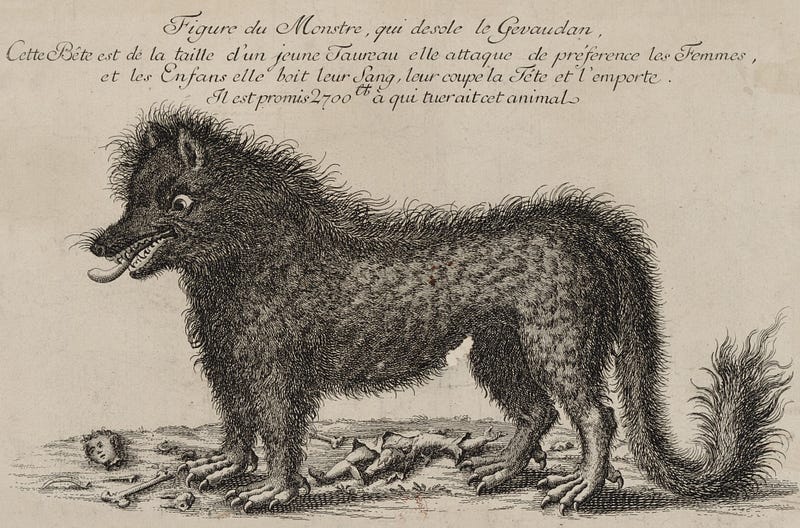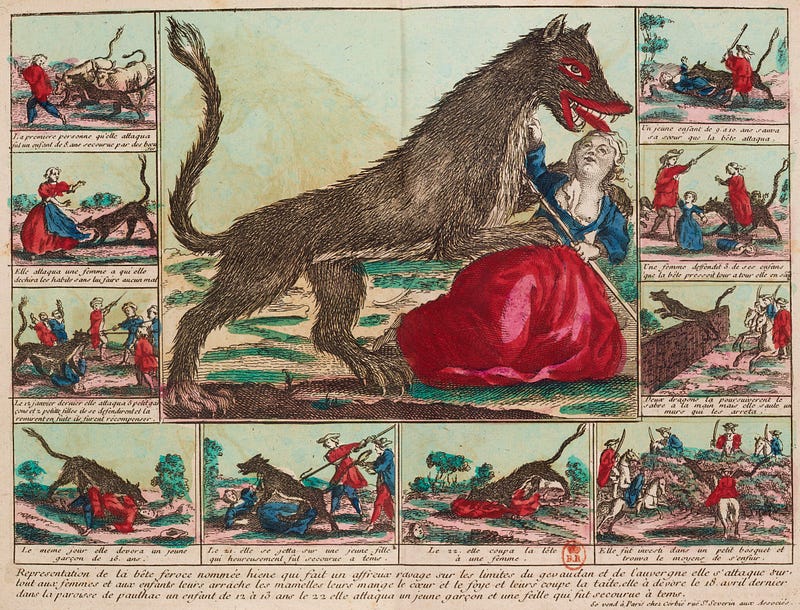The Enigmatic Beast of Gévaudan: Unraveling the Mystery
Written on
Chapter 1: The Emergence of the Beast
Gévaudan, a region nestled in France northwest of Provence, has long been a site of folklore and enigmatic tales. In the summer of 1764, a terrifying creature emerged from this backdrop. Was it a rogue wolf, an unidentified animal, or perhaps even a human predator? Or could the hysteria have simply clouded judgment?
This section explores the initial horrifying encounters attributed to the beast, including the gruesome attacks on a young shepherdess and a fourteen-year-old girl, among others. Over the span of three years, the creature was blamed for over a hundred fatalities. The question remains: what truly was the Beast of Gévaudan?
Chapter 2: Investigating the Killings
The authorities in Paris were quick to respond, despite the distance. Early descriptions of the beast indicated it resembled a wolf, prompting an extensive series of hunts across Gévaudan. Local hunters and soldiers scoured the region under the watchful eye of François Antoine, the royal grand huntsman.
Approximately 20,000 individuals participated in the search, leading to the slaying of many animals. Among them, a large wolf was killed on September 21, 1765, measuring 80 cm tall and 170 cm long, with formidable claws and teeth. Inside its stomach, undigested sheep remains and pieces of fabric were discovered, suggesting it might have been the feared predator.
This wolf was sent to Versailles for display, thrilling some and prompting ridicule from others. Horace Walpole, an English statesman and author, derided the creature, claiming it was less intimidating than the Empress of Russia's dental work. Unfortunately, reports of further attacks from Gévaudan soon surfaced, indicating this wolf was not the infamous beast—or at least not the sole one.

Chapter 3: Theories Abound
Speculation regarding the Beast of Gévaudan has flourished over the years. Some theorists proposed that the creature was not a wolf at all, but rather a hyena or an exotic animal that had escaped from a noble's menagerie. To this day, there are advocates of the theory that it was a cryptid—an unknown creature or one thought to be extinct. The film "Brotherhood of the Wolf" (2001) even suggested a conspiracy involving conservative factions aiming to instigate fear among the populace.
As early as the 18th century, speculation arose that a human might be masquerading as the beast. Witnesses reported seeing it walking on two legs and claimed it bore markings resembling buttons or nipples. Curiously, the majority of its victims were women and children. Could it have been that the creature was deterred by men, particularly in groups? This theory gained traction when, in 1777, a man named Jean Chausse was apprehended for horrific crimes while disguised in animal skins.

Chapter 4: Historical Perspectives
Another angle explored is the supernatural, with some suggesting that the beast was a werewolf, a figure prevalent in folklore. This narrative gained momentum when local hunter Jean Chastel allegedly shot another formidable wolf in 1767, reportedly using a consecrated silver bullet. However, this wolf's body decomposed too quickly for further examination, raising questions about the Chastel family's credibility.
Historians argue that wolf attacks were not uncommon in Europe during that era, especially in regions where starvation drove animals to prey on human corpses. The prevailing theory is that the events were a case of mass hysteria, fueled by sensationalist media. Professor Jay M. Smith's book “Monsters of the Gévaudan” (2011) suggests that the real solution lay in the systematic extermination of wolves rather than in the mythical silver bullet.
Attention all readers!
As content creators on Medium.com, we encounter minimal compensation for our efforts. If you appreciate my work, please consider supporting me on my "Buy Me a Coffee" page. Your contributions can significantly enhance my ability to produce quality content. Thank you for your support!
